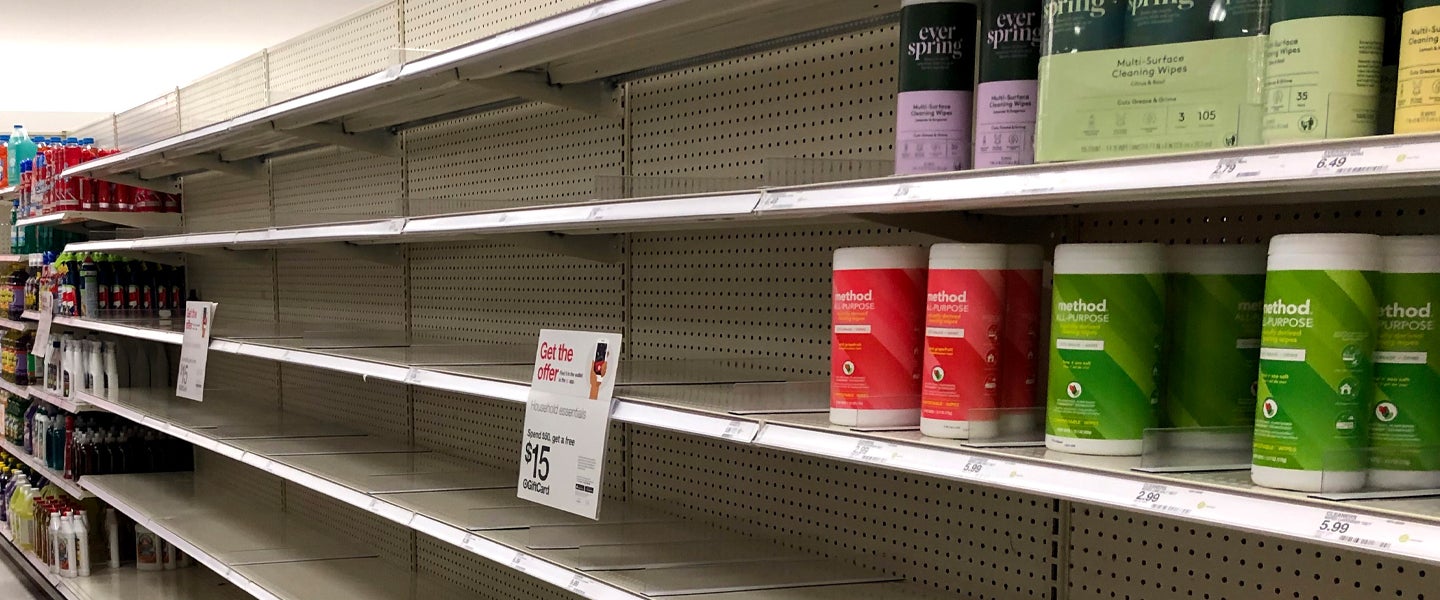All those industrial-strength bleach-powered germ-fighting abandon-all-hope-ye-who-enter-here cleaners have been sold out for months now, and it will probably be awhile before you can reliably find your usual cleaning products every time you seek them. And that sad bottle of Mrs. Meyer’s all-purpose cleaner looks about as effective as tossing a water bottle at a house fire, so what are you supposed to do to make sure you’ve adequately disinfected your house?
First, take a deep breath. A lot of the cleaners on the market are kind of overkill — there’s not really much of a reason to wipe down your coffee table with medical-grade disinfectant. In fact, for most of your household surfaces, if it looks clean, it probably is as clean as it needs to be. You can also find tons of simple DIY-cleaner recipes online, and so long as you know some basic rules, like not to mix certain ingredients, they’re perfectly safe and effective.
The most common ingredients are white vinegar and baking soda. For example, according to Good Housekeeping, you really only need vinegar and water, mixed in equal parts in a spray bottle to create an all-purpose cleaner. If you want to add fragrance, you can add lemon rinds or essential oils. To clean and deodorize your kitchen, you can mix baking soda with warm water to dissolve into a spray, or you can use a smaller amount of water to form a paste for scrubbing your stove or sink.
Your bathroom and high-touch public surfaces (like maybe your doorknob) should probably receive more of a heavy-duty cleaning, though. These are areas where killing the invisible germs and bacteria is a bit more necessary (washing your hands is more important, but still). Vinegar and baking soda have antibacterial and disinfectant qualities, but they aren’t very strong. To reliably kill coronavirus or stomach flu, you’ll need bleach — if you’re able to find a bottle of bleach at the store, you have a world of cleaning opportunities before you.
Same with rubbing alcohol and ammonia, but do not combine these things! You will literally produce chloroform or chlorine gas or some other chemical that might make you pass out (or, y’know, die). Mixing baking soda and vinegar will just cause a science fair-style volcano, but the other combos are a lot more serious. Don’t mix bleach and vinegar. Don’t mix bleach and ammonia. Don’t mix bleach and rubbing alcohol. Really, you should just be careful not to mix any cleaning products.
The Centers for Disease Control and Prevention provides instructions and guidelines for making your own bleach solution capable of killing off coronavirus. “Unexpired household bleach will be effective against coronaviruses when properly diluted,” the site reads. “Follow manufacturer’s instructions for application and proper ventilation. Never mix household bleach with ammonia or any other cleanser. Leave solution on the surface for at least 1 minute.” More specifically, they recommend using 5 tablespoons of bleach, or a minimum 70 percent alcohol, per gallon of room-temperature water.
Basically, with bleach, vinegar and baking soda in your tool kit (I feel as though I must once more reiterate that these chemicals cannot be mixed), you can accomplish all the cleaning shit you would have otherwise relied upon Lysol-brand products for. You might still be having a hard time finding bleach alongside traditional cleaning products, but there’s no need to panic — it’s still up in the air whether we can even contract the virus from contact with surfaces, so if you’re in your own home, you’re probably fine if you can’t disinfect everything. Just wash your hands, silly!

